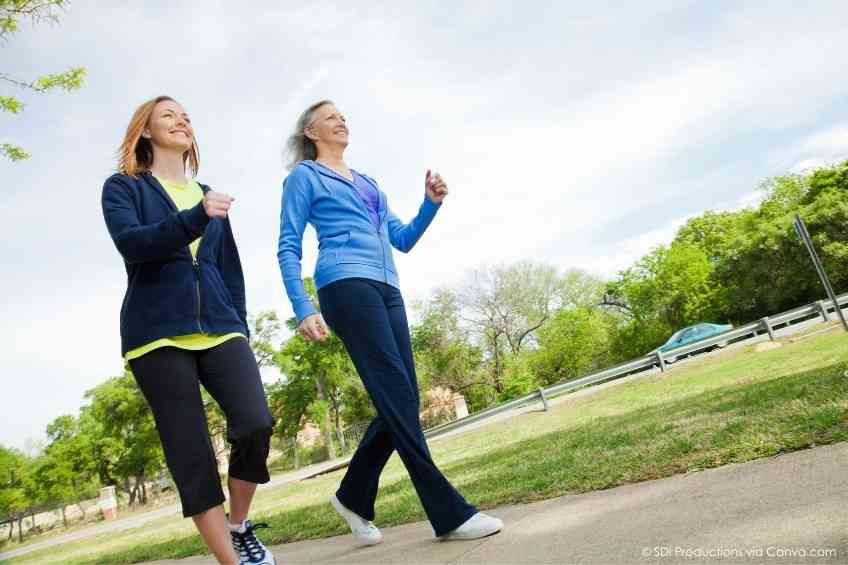By John Salak –
It is almost impossible to walk away from the health importance of taking a stroll. The 10,000-steps-a-day program has been touted for decades as a pathway to weight control and cardiovascular health. Now, however, new calls and approaches are emerging that underscore the critical health importance of just getting up and moving at almost any level.
Columbia University chimed in most recently when it reported that living in “more walkable neighborhoods” protects against the risk of overall obesity-related cancers in women, specifically postmenopausal breast cancer, but also ovarian cancer, endometrial cancer, and multiple myeloma.
Neighborhood walkability is not a new concept. It focuses on a set of urban design features that promotes pedestrian activity, supports overall physical activity and is associated with lower body mass index. Research until now was limited on the relation between walkable neighborhoods and the risk for obesity-related cancer.
Columbia’s examination helped close some of this gap. In general, it found that women benefitted from living in any area that featured at least some walkable features. However, the university noted that women who lived in areas with the highest levels of neighborhood walkability considered the top 25 percent of walkability, had a 26 percent lower risk of obesity-related cancers compared to those who lived in neighborhoods with the lowest 25th percent of walkability.
The research focused on almost 15,000 women between the ages of 34 and 65, who were recruited at a mammography screening center in New York City between 1985 and 1991 who were then followed over nearly three decades.
“These results contribute to the growing evidence of how urban design affects the health and well-being of aging populations,” reported Dr. Andrew Rundle, a professor of epidemiology at Columbia Mailman School.
The research team noted that individual-level interventions to increase physical activity and reduce obesity are costly. Many also often have only short-term effects, “However, urban design can create a context that promotes walking, increases overall physical activity, and reduces car-dependency, which could lead to subsequent improvements in preventing diseases attributed to unhealthy weight,” Rundle noted.
Another recent study by Tulane University underscored the importance of moving in relation to reducing heart disease. Its research team reported that taking at least 50 steps climbing stairs each day could significantly reduce a person’s risk of heart disease. Climbing more than five flights daily reduced the risk by as much as 20 percent.
“Short bursts of high-intensity stair climbing are a time-efficient way to improve cardiorespiratory fitness and lipid profile, especially among those unable to achieve the current physical activity recommendations,” said co-corresponding author Dr. Lu Qi. “These findings highlight the potential advantages of stair climbing as a primary preventive measure for ASCVD in the general population.”
Not interested in 10,000 steps daily, long neighborhood walks or moving up five flights or more of stairs? Almost any daily walking appears to be a lifesaving move.
The European Society of Cardiology reported earlier this year that fewer than 5,000 steps a day can help. It noted that walking at least 3,867 steps a day started to reduce the risk of dying from any cause, while just 2,337 steps a day reduced the risk of dying from cardiovascular disease.
Still too much? The University of Connecticut just reported that just 3,000 steps per day can significantly reduce high blood pressure, which impacts 80 percent of older adults, raising their risk of heart attacks and strokes.
“It’s easy to do, they don’t need any equipment, they can do it anywhere at almost any time,” noted the lead author of the UConn study. “3,000 steps is large enough but not too challenging to achieve for health benefits.”












